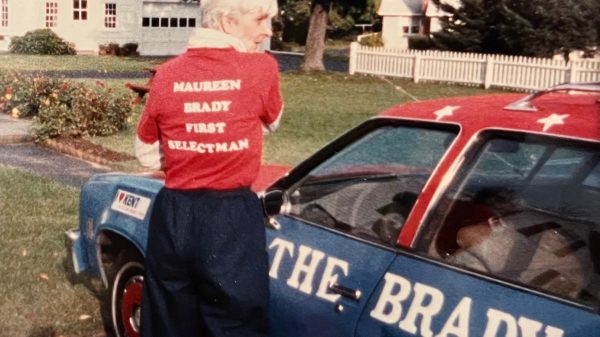Sic fugit gloria mundi. Recently we have seen the eclipse of three of the most influential figures of post-World War II America: former First Lady Rosalynn Carter, former Secretary of State Henry Kissinger, and former Supreme Court Justice Sandra Day O’Connor, the first woman to be appointed to that post.
What a triumvirate—all born in obscurity within seven years of each other, all reaching positions of power through their own extraordinary talents and efforts, all effecting influence even after their official duties were done. Their missions in life were very different: one a consummate, controversial politician; and one a humanitarian and a “two-for-one” adviser to her presidential husband, one a groundbreaking jurist, the kind of old-fashioned conservative who could still see the other side of an issue.
Perhaps not since those crafters of the Declaration of Independence, John Adams and Thomas Jefferson, both died on the 50th anniversary of its signing has time closed the door on such important people in such close proximity.
I had the privilege of covering two of these notables when they appeared in the Kent Memorial Library’s spectacular annual lecture series of the early 2000s. Kissinger appeared in a program with the Permanent Russian Ambassador to the United Nations, Vitaly Churkin, while O’Connor came to Kent in 2010 as part of a series focusing on “The Supreme Court in American Life.”
O’Connor, appointed to the court by Ronald Reagan in 1981 served more than 24 years and was described as “the most powerful woman in America,” because, as a moderate, she often cast the deciding vote in cases involving abortion, affirmative action, national security, campaign finance reform, separation of church and state, and states’ rights—issues still contested before that august body today.
Like many female groundbreakers, O’Connor endured slights from male colleagues—following her graduation from Stamford Law School she had trouble even finding a job because of her gender and, as a Supreme Court Justice, was sometimes “talked over.” But she quietly persevered, elevating common sense and moderation over reflexive adherence to ideology, according to legal commentator Ruth Marcus. Marcus concludes, “Her legacy, on and off the bench, stands as a sharp rebuke to ideology and a testament to pragmatism.”
In an odd coincidence, she succeeded Henry Kissinger as chancellor of the College of William & Mary in 2009.
O’Connor was born in 1927 and grew up on an Arizona ranch, nine miles from the nearest highway. Her rural beginnings are mirrored by Rosalynn Carter, the young girl from Plains, Ga., who was born the same year as O’Connor and who faithfully followed her husband, Jimmy, around the world during his Naval career, through his governorship, and on to the White House. Her post-White House career brought her even more fame as she traveled the world for humanitarian causes.
Through 77 years of marriage, the Carters stood side by side through the vagaries of life, and she became his staunchest advocate and advisor, supporting his public policies, meeting with domestic and foreign leaders and even sitting in on Cabinet meetings. He found in her an equal partner and during those sessions, she took notes—but never spoke—using the information so she could be knowledgeable when representing him.
Throughout her decades of public service, she was perhaps best known for being a leading advocate for women’s rights and mental health. After leaving the White House in 1981, Carter continued to advocate for mental health and other causes, wrote several books, and became involved in the national and international humanitarian work.
As with O’Connor, men were sometimes hostile to her role as the President’s emissary. A U.S. diplomat in Brazil insisted that women were meant to be kept “at home and that’s all.” Carter was pleased, however, that she had hammered out a new role for herself as First Lady and remembered how other presidents’ wives had been “confined” to being “official hostesses.” After Carter had been first lady for two years, Time magazine called her the “second most powerful person in the United States” and journalists dubbed her the “Steel Magnolia.”
The last of the triumvirate was the oldest, the redoubtable Henry Kissinger, who died last week at age 100 in Kent. Kissinger, whose family fled the rising Nazi terror in Germany when he was 15, was a self-made man who rose to power by virtue of his brilliance during one of the most tumultuous eras in the United States’ 20th-century domestic history. His complex contributions to the nation’s 20th-century narrative included the covert carpet-bombing of Cambodia during the Vietnam War that killed some 50,000 civilians and which brought accusations that he was a war criminal. That was followed by his negotiation of the U.S. withdrawal from Vietnam, which earned him a Nobel Peace Prize.
He was instrumental in opening relations with China, President Richard Nixon’s premier diplomatic achievement, but at the same time provided military arms to Pakistan during its genocidal war in East Pakistan, which killed 300,000 people and drove into refuge another 10 million.
His cunning and ruthlessly practical approach to international relations caused him to be heralded by some and reviled by others, but he successfully transformed himself into an elder statesman who continued to advise presidents until his death. He was the only American to deal with every Chinese leader from Mao to Xi Jinping.
A resident of Kent since the early 1980s, he was “a regular guy,” to his Kent friends, a citizen who supported local nonprofits even as he kept up his credentials as a political guru on the international stage.
How odd that these three figures—so influential, so powerful, so very different in their objectives—all survived to such advanced ages and then died within days of each other. The old order truly passeth. Two of them brought people together and fostered social agendas, the third excited division, but all were Titans on the stage of the chaotic 20th century. Who today do we have to replace them?
Kathryn Boughton is editor of the Kent Good Times Dispatch. Her opinions are her own and do not represent the editorial policy of the paper. Out on a Limb is an eclectic monthly column that will touch on issues that interest, amuse or outrage her.






























